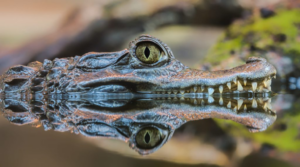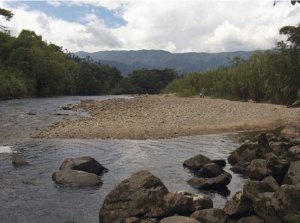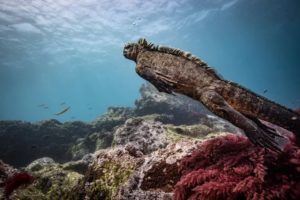Bartolomé Island, nestled in the Galapagos Islands archipelago amidst the vastness of the Pacific Ocean, unveils a mesmerising tapestry of natural beauty and unparalleled landscapes. Let’s delve into the allure of this captivating destination, renowned for its surreal scenery and pristine white sand beaches that have made it a sought-after gem for both photography enthusiasts and avid explorers.
Volcanic Origins and Geological Marvels
Bartolomé Island’s story begins with the symphony of volcanic eruptions, sculpting its terrain into a spectacle of geological wonders. Among these, the Bartolomé Pinnacle stands tall—a testament to nature’s artistry. This iconic, eroded lava rock emerges from the crystalline waters, offering a panoramic vista of the entire archipelago.
The White Sand Beach Paradise
A highlight of Bartolomé Island lies in its exquisite white sand beach, acclaimed as one of the Galapagos’ most stunning. Beyond its aesthetic appeal, the beach provides an idyllic setting for swimming and snorkelling, inviting visitors to immerse themselves in the vibrant marine life. Encounter sea turtles, rays, sharks, and an array of tropical fish, creating an underwater symphony of biodiversity.
Ascend to the Summit: Bartolomé Pinnacle Exploration
For those seeking a more elevated perspective, the path leading to the top of Bartolomé Pinnacle promises a rewarding adventure. At the summit, a breathtaking panorama unfolds, showcasing the intricate beauty of the archipelago and the neighbouring Santiago Island. It’s a vantage point that captures the essence of the island’s allure.
Conservation Haven for Endangered Species
Beyond its visual splendour, Bartolomé Island plays a crucial role in preserving endangered species. Among its inhabitants are the elusive Galapagos penguin and the flightless cormorant. This delicate ecosystem underscores the island’s commitment to conservation. The limited and controlled access ensuring the sanctuary remains intact for generations to come.
Unforgettable Encounters with Nature’s Bounty
Bartolomé Island emerges as a unique and cherished jewel within the Galapagos Islands, offering an unforgettable odyssey through nature’s wonders and the biodiversity of this natural heritage. As part of dedicated conservation efforts, access to the island is judiciously regulated, safeguarding its fragile ecosystem and securing its legacy for the future.
In conclusion, a visit to Bartolomé Galapagos Island is an immersive experience. This journey unfolds the secrets of volcanic creation, the charm of white sand beaches, and commitment to preserving endangered species. It stands as a testament to the delicate balance between exploration and conservation, inviting discerning travellers to witness the magic of Bartolomé’s untouched paradise.

Foto: Galápagos Native Tours

Foto : Day Tours Galápagos



